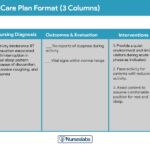For years, medical understanding has categorized certain health conditions as “simple,” suggesting straightforward paths to recovery and minimal long-term concerns. This perspective has been particularly prevalent in the context of congenital heart disease (CHD), where defects like ventricular septal defects (VSD), atrial septal defects (ASD), pulmonary stenosis (PS), and patent ductus arteriosus (PDA) have often been labeled as mild. The belief was so strong that guidelines sometimes didn’t even recommend ongoing cardiology follow-up for these patients. But is this view truly supported by evidence, or has it become an unquestioned assumption that these individuals will live as long and healthily as the general population?
Historically, numerous studies seemed to confirm that patients with these so-called simple CHDs enjoyed survival rates comparable to those without heart conditions. This viewpoint became ingrained in medical textbooks and guidelines. However, a closer look reveals limitations in these earlier studies. While they tracked large groups of patients over extended periods, the number of individuals with each specific simple CHD within these studies was often small. This statistical constraint meant that the studies might not have been sensitive enough to detect subtle but real differences in survival compared to the general population, potentially leading to overly optimistic conclusions.
More recent, larger-scale research is beginning to challenge this long-held belief of universally normal life expectancy for those with mild CHD. A comprehensive systematic review by Verheugt and colleagues uncovered a concerning trend: reduced survival across all forms of CHD, with patients categorized as having mild CHD surprisingly showing poorer survival rates than the general population. This finding underscores the need to re-evaluate our understanding of “simple” diagnoses and their long-term implications.
In light of this evolving understanding, a study by Videbæk and team offers valuable insights. This population-based study meticulously tracked the long-term outcomes of patients diagnosed with simple CHD – specifically isolated and uncomplicated ASD, VSD, PDA, and mild PS – all initially assessed by a single cardiologist between 1963 and 1973. The study’s strength lies in its complete follow-up, made possible by Denmark’s national patient registry, encompassing 1,241 patients and an impressive 58,422 patient-years of observation.
The findings were striking. At a median age of 47 years, individuals with simple CHD demonstrated a mortality risk double that of the general population. Even more concerning was the significantly elevated risk of sudden unexpected death (approximately 4-fold increase) and cardiac death (approximately 6-fold increase). Furthermore, morbidity rates were nearly six times higher, with increased occurrences of cardiac surgery, heart failure, endocarditis, pulmonary hypertension, ventricular tachycardia, and stroke. While these figures might seem alarming, it’s important to contextualize them within the relatively low absolute mortality rate in the simple CHD group, which was 2.2 per 1,000 patient years. Interestingly, the mortality risk remained remarkably consistent across the different types of simple CHD studied (ASD, VSD, PS, and PDA), each exhibiting individual mortality rates within the range of 2.1–2.2 per 1,000 patient years.
It’s crucial to acknowledge the study’s limitations. The patient cohort was diagnosed over four decades ago, and medical practices in diagnosis and treatment have undoubtedly progressed since then. However, such long-term studies inherently face this challenge. Additionally, while having a single cardiologist conduct all initial diagnoses ensures consistency, it also raises questions about the generalizability of the findings, particularly considering that echocardiography, a standard diagnostic tool today, was not available at the time of initial assessments.
Despite these limitations, the Videbæk study serves as a critical challenge to the notion that simple CHD is effectively “cured.” It adds to the growing body of evidence suggesting that conditions once perceived as minor and fully resolved may carry longer-term risks than previously recognized. Even in cases like partial atrioventricular septal defect, often grouped with mild CHD, while survival rates are high, reoperation rates can reach approximately 25% within 20 years, and a significant portion of adult patients are not under the regular care of a cardiologist.
This information carries significant weight given the changing demographics of the CHD patient population. Adults now constitute over half of all CHD patients, with estimates suggesting 1.3–1.4 million adults with CHD in the United States alone. Of these, around 750,000 are estimated to have simple congenital defects. If even a portion of this large group requires specialized long-term follow-up, the implications for healthcare costs and the already stretched workforce of adult congenital cardiologists are substantial. Ideally, a system for risk stratification is needed to identify which patients with simple CHD are at higher risk and require more focused follow-up. Studies have shown, for example, that males and those undergoing ASD closure at older ages may face decreased survival rates. Further research is essential to refine our ability to identify these higher-risk individuals.
Ultimately, these findings have profound implications for the doctor-patient relationship. It is no longer justifiable for clinicians to assure patients with simple CHD that they are entirely “cured” by surgery. While optimism about long-term outcomes is still warranted, a balanced message that includes a word of caution about a slightly increased risk of arrhythmias, mortality, and the potential need for reoperation is more appropriate. This honest and informed approach empowers patients to be more proactive about their health, potentially seeking medical attention earlier if late complications arise, and ultimately mitigating some of the identified increased risks.
